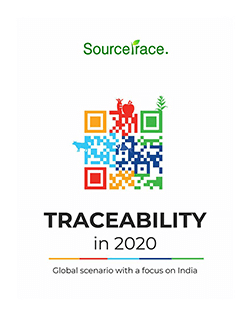When a storm is brewing in the teacup
 A relaxing cup of morning tea is the best way to start our day – and each of us have our favourites – Earl Grey, Assam, Darjeeling…. So soothing and relaxing is the effect of a cup of tea that it’s no wonder that after water, it is the most popular beverage in the world. More than three billion cups of tea is consumed everyday- and the demand is rising. Economically and socially too, the industry is of great importance, and is in a state of transition. The topic of tea often draws our imagination to the lush green tea plantations over rolling hills, spreading out mile after mile, but here the future looks yet uncertain, as the tea industry faces a storm in its own teacup.
A relaxing cup of morning tea is the best way to start our day – and each of us have our favourites – Earl Grey, Assam, Darjeeling…. So soothing and relaxing is the effect of a cup of tea that it’s no wonder that after water, it is the most popular beverage in the world. More than three billion cups of tea is consumed everyday- and the demand is rising. Economically and socially too, the industry is of great importance, and is in a state of transition. The topic of tea often draws our imagination to the lush green tea plantations over rolling hills, spreading out mile after mile, but here the future looks yet uncertain, as the tea industry faces a storm in its own teacup.
There are several reasons why the tea industry is facing challenges and no longer enjoys the secure position it once held. The first is a change in demographic pattern, which we must consider on a regional scale. The global middleclass is set to increase in size from 440 million to 1.2 billion; and a major portion of them would be in Africa and South Asia. This growing population will drive the demand for food, putting pressure on the available agricultural land, with which tea would have to compete.
The tea sector has already seen the impact of competition for land and this will stress the importance of improving yields per hectare. As with other crops, advances in agronomy and chemical inputs since the Second World War have resulted in significant increases in tea yields per hectare. But most likely, the use of these chemicals has already hit a peak and it’s unlikely that yields would increase any further. On a positive note, tea would also have a better market in its own producer countries, such as India and China, as the growing middle class in these countries would be ready consumers.
The second constraint that tea is likely to face is that of resources. By the year 2030, it is predicted that the world demand for energy would be up by 50 per cent, and the demand for water could be as much as 40 per cent higher than supply. So both prices and the competition for resources would be higher. Processing of tea being an energy-intensive operation, and with several countries in Asia and Africa facing power shortages, this will complicate the situation. But here again are opportunities – the increased up-take of renewable energy has the capacity to provide localized and sustainable energy supply for industries such as tea. So it opens up great possibility of growth in the renewable energy sector.
Climate change also impacts trends in plantation tea. Tea is a very delicate perennial plant, sensitive to changes in temperature and precipitation. In the last 60 years, rainfall has fallen by a fifth in Assam, the primary tea growing area in India, and temperatures have risen by a full degree centigrade. In Sri Lanka, on the other hand, climate change is expected to bring in warmer climate and more intense rainfall. Also, there would be 10% increase in dry and wet seasons per year in the main plantation area, with drought and soil losses as the likely consequences. Climate change is also expected to increase pests and diseases affecting the plants, and this will ultimately affect both yields and prices.
Another issue is that growing and harvesting tea is labour-intensive, and this labour would be hard to find in the coming decades. The extent of migration from rural to urban is astounding, as more and more young people are choosing to leave the tea plantations and move to city-based jobs in the service sector. Generally, tea plantation workers are paid low wages, and it often cannot meet the basic needs of workers. There are cases in Assam where the wages are so low that parents cannot afford to keep their girls and they are trafficked out of the region. Justifiably, some workers feel that these are ‘distress situation’ jobs.
Overcoming these crises and turning tea into a sustainable crop demands leadership – and both governments and businesses will need to take an active role. Wherever improvements have happened, it is as a result of increasing support to governments to monitor standards in their countries. Also, consumers are becoming aware and intolerant towards products which are produced using any unethical means. The principles of sustainably produced tea are that it must be produced without exploitation, dangerous conditions or unreasonably low wages, and ensure that profits are more equitably distributed. There is still a lack of complete understanding about what constitutes a ‘sustainable livelihood’ for the tea workers.
Such a livelihood should address issues of wages, living conditions and labour rights. Opportunities in turning tea into a sustainable crop can be realized by finding new ways of working and collaboration with all partners in the value chain – the smallholders, growers, estate owners, processors, traders, packers and consumers. And it’s good news that there have been starting points here. For example, Trustea, the “India Sustainable Tea Program” is an ambitious initiative to develop and implement a sustainability code for the Indian domestic tea market. The Trustea code is designed to evaluate the social, economic, agronomic and environmental performance of Indian tea estates, smallholders, and Bought Leaf Factories (BLFs). Most of the tea estates and organizations are trying to acquire the code. The tea from Rainforest Alliance Certified™, on the other hand, is harvested from farms that use methods that protect the health of farmers, their livelihoods, their land and the surrounding waterways. Farms certified with Rainforest Alliance are also licensed to sell their produce globally.
Come to think of it, it’s the tea producers and drinkers who retain the strongest links with tea, though at different ends. What do they have to say about the changing scenario? Rajeev, a tea producer, whose father was an estate manager, says that his job is so different from his dad’s. He hardly sets foot in the plantations; and with so many of the processes now mechanized and computerized, it’s “kind of dull”. While he has hard times finding the right labour, there have also times when he has had to let labourers go, and when tea garden workers have felt let down by the tea industry. On the other hand, far away from these plantations, Priscilla, a 23 year old avid tea drinker, is oblivious of all this drama. After tasting and experimenting with several varieties of teas, including flavoured varieties, she prefers her old fashioned teapot for a cup of traditional English breakfast tea. Some things do stay the same!
SourceTrace's software solutions have been deployed across 37 countries and 4 continents already. We are on a mission to make agriculture and food systems more sustainable. Get in touch and we will extend our expertise and commitment to you.
Request a Demo


